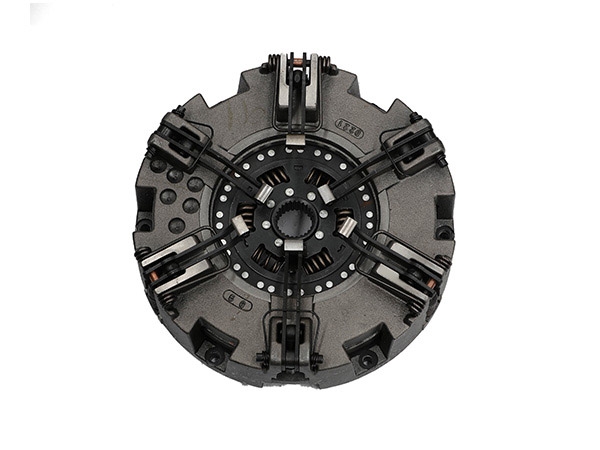Most of the steering mechanisms of crawler tractors are steering clutches. When the tractor is performing deep soil preparation or sowing operations, failures such as slippage of the steering clutch, incomplete separation or inability to separate the locomotive often occur, resulting in difficulty in steering and deviation of the locomotive, which not only affects the work, but also wastes power and increases operating costs. In this case, it is necessary to find out the reasons in time to eliminate them, so as not to affect the normal operation of the locomotive. The common tractor steering clutch failures mainly include the following.
Clutch slip
The clutch slips and the forward speed of the tractor is reduced. When the steering lever on one side is pulled to control the steering, the steering clutch on the other side is swept away, the tractor cannot be steered, and makes a “click, click” sound, the operation is difficult, the work efficiency is reduced, and the steering clutch is burned.
Reason
(1) Cultivated land is often a partial traction operation. In order to prevent the right crawler from falling into the furrow, the driver often turns the left steering rod, which causes the early wear of the left friction plate, the wear of the friction plate becomes thinner, and the passive plate Exposed rivets.
(2) The foot brake is used before the steering clutch is completely separated, or the steering clutch is engaged before the brake is released, resulting in an increase in the strength of the inner and outer springs of the steering clutch and insufficient spring compression force.
(3) The clutch enters the oil, leaks into the gear oil from the central drive or the final drive, and leaks into the grease and diesel oil from the oil tank.
(4) The joystick has no free travel, the tractor is operated unreasonably, and the locomotive is overloaded for a long time.
Method of exclusion
Check the joystick and check it every 50-60 hours. Don’t use too much force when pulling the steering lever, and release it quickly and steadily.
If oil is found to stick to the driving piece and the driven piece, it should be cleaned with a metal cleaner. The cleaning work is best done immediately after the work is finished, because the driving piece and the driven piece are very hot at this time, and the oil is easy to wash off.
At the end of each shift, the oil drain plug of the isolation room should be opened, the leaked gear oil should be released, and the cause of the oil leakage should be checked.

Steering clutch not fully disengaged
The effective stroke of the joystick is too small. Although the joystick is pulled hard when turning, it still cannot reach the full stroke, which makes it difficult for the tractor to turn.
Reason
(1) The total thickness of the steering clutch friction plate (the size from the active drum to the pressure plate after assembly) is too large, and the pressure plate and the release bearing are close to the partition. When the steering clutch is disengaged, the disengaging bearing dial quickly touches the partition plate, the control lever cannot be pulled, the effective stroke becomes smaller, and the disengagement is not complete.
(2) Where the steering clutch release fork rod and the two lugs of the release bearing sleeve cooperate, the release fork rod and the fork rod seat are worn. When the joystick is pulled, the fork arm is quickly pressed against the active drum pressure plate (even the pressure plate is ground with groove marks), which makes the joystick stroke smaller and cannot be completely separated.
…
Details can be accessed by clicking here:https://www.syclutch.com/news/trouble-of-steering-clutch-of-crawler-tractor.html



